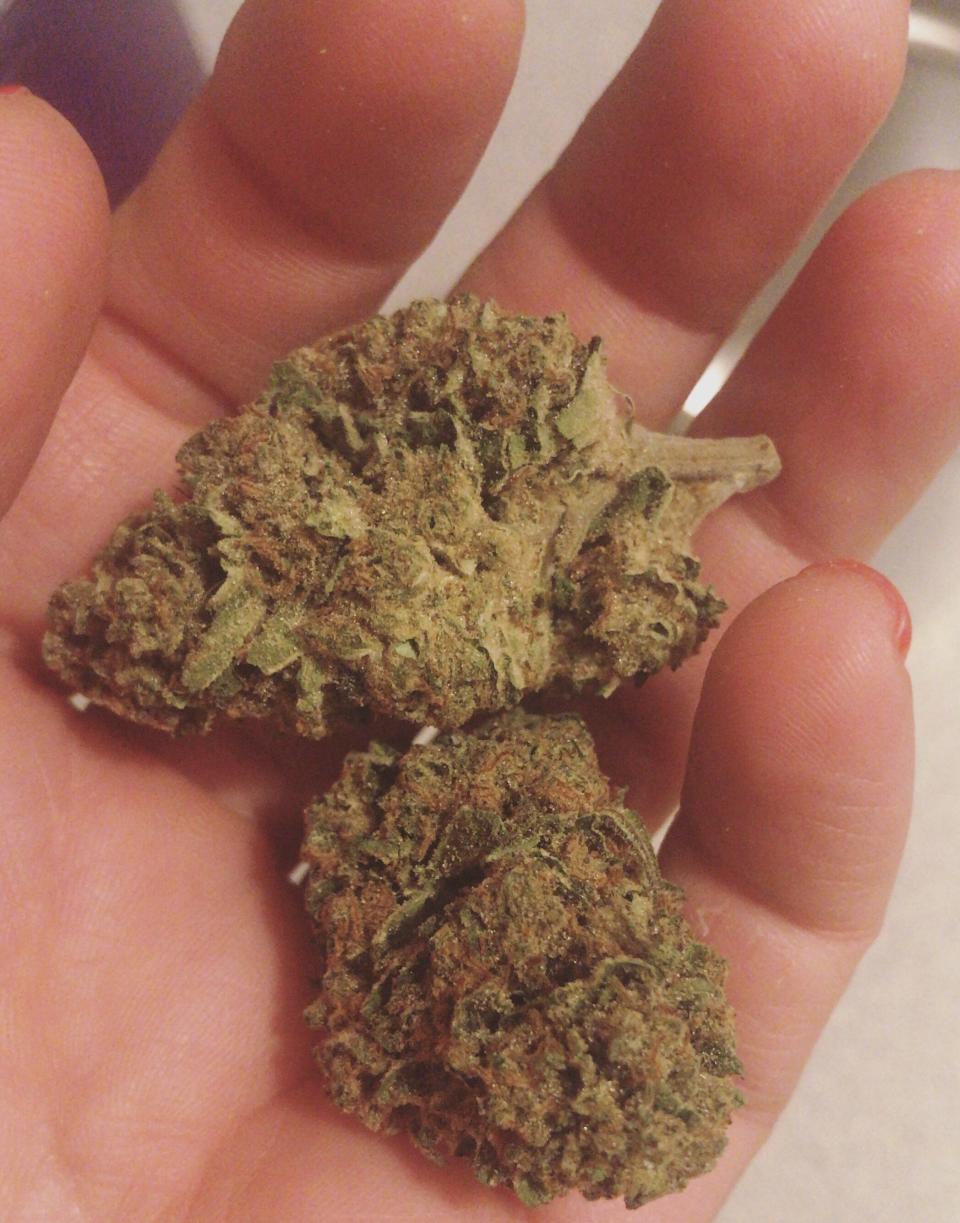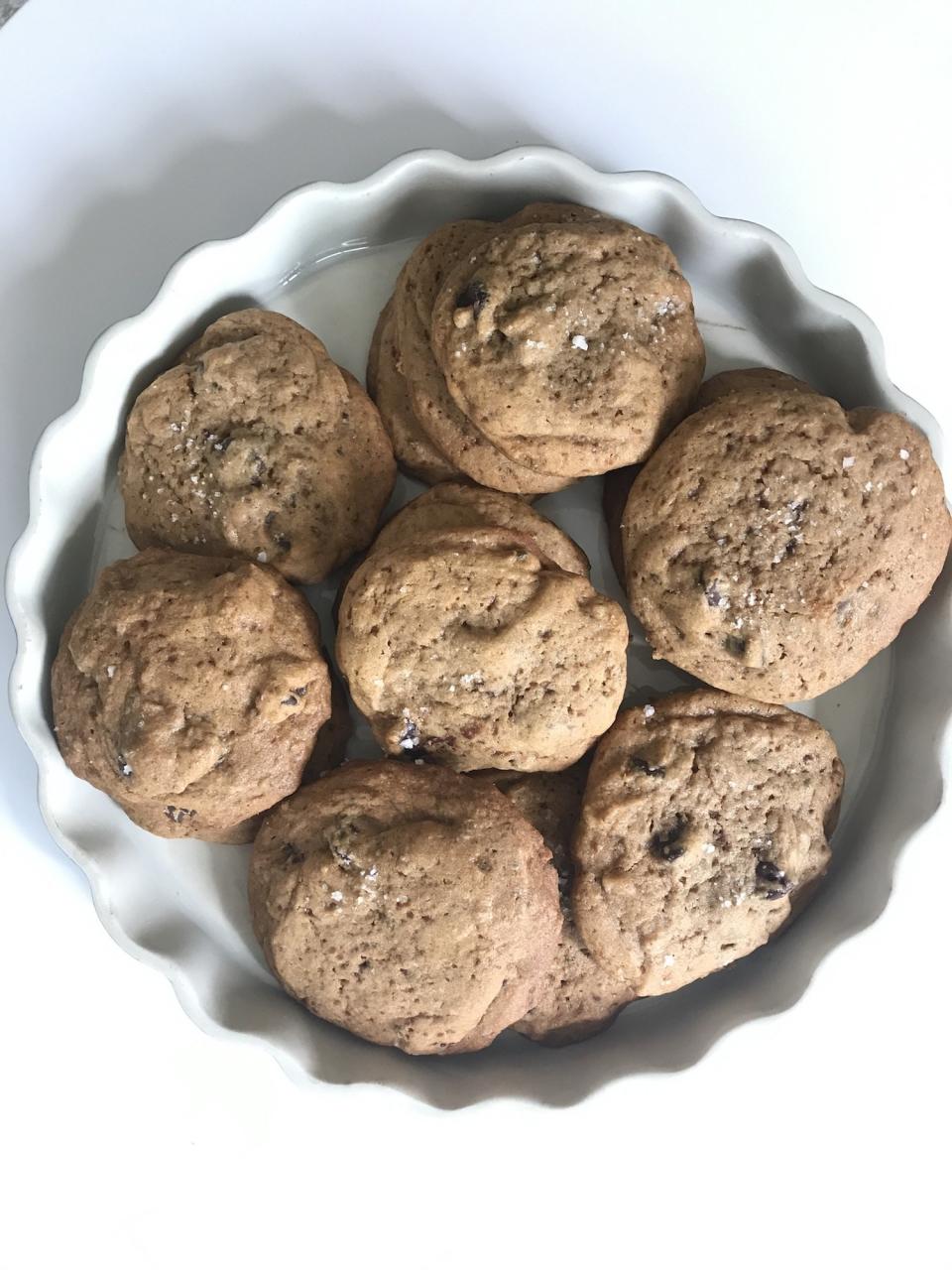Why People With Asthma Can Benefit From Edibles
Asthma runs in my family, and growing up working-class in the inner city — pollution, roaches, and asbestos in public schools — didn’t help my lungs as a child. My respiratory issues could be worse, but they’re bad enough to get in the way of some of my favorite athletic pursuits like hiking and cycling. Even being within a block of a cigarette smoker can bring on a cough that lasts for hours. Doctors put me on a corticosteroid inhaler years ago, and I’ve often wondered what year after year of sucking steroids into my lungs is doing to my body over the long term.
These days, I live in Oregon where marijuana is legal for both medical and recreational use. I can walk just a few blocks from my Portland apartment and buy weed at a store, where a "budtender" can answer my questions about strains (indica or sativa), about chemical makeup (more terpenes, higher CBD-to-THC ratio, and other components), and about administration (tincture, syrup, or vaporizer). Recently, I decided to stop my daily routine of inhaling steroids and try using weed as my primary anti-asthma medicine.
How does weed use affect lung health?
Medical research has repeatedly shown that weed can benefit lung health. One 2012 study using data from a 20-year period had stunning results: Pot smokers not only had better lung function than cigarette smokers but “low to moderate” pot smokers also had better lung capacity than people who didn’t smoke anything. For many asthmatics, though, smoking a joint can cause more problems; even if the smoke carries beneficial medicine, it’s not really worth the trouble of irritating already-sensitive lungs even more.
However, Canadian researchers found that some pot smoke can be even more toxic than tobacco smoke. In the 2008 study published in the journal Chemical Research in Toxicology, government researchers from Health Canada’s Safe Environments Programme found that pot smoke contained 20 times the ammonia levels as did tobacco smoke. Hydrogen cyanide and nitrogen chemicals were also found in concentrations three to five times higher in marijuana smoke.
That doesn’t necessarily mean marijuana harms lungs — it just means that smoking anything can introduce unwanted chemicals into the respiratory system. But with recreational pot legally for sale in nine states and medical marijuana available in over half of U.S. states, it’s easy to find other ways to introduce cannabis into your health regimen.
Cannabis is not just THC, or tetrahydrocannabinol, the chemical that famously becomes psychoactive when heated and gets you high. There are over 400 different chemicals that make up the plant, according to a 2012 study in the journal Therapeutic Advances in Psychopharmacology, including at least 60 of what are called cannabinoids. Those cannabinoids interact with the human body, specifically with what medical professionals call the endocannabinoid system — numerous receptors that bind with chemicals present in marijuana and affect the body and mind in different ways.
So, why do people with respiratory issues use weed?
It may seem far-fetched to imagine a doctor telling their asthmatic patients to use weed, but that’s exactly what Janice Knox does. She's spent 32 years working as a board-certified anesthesiologist before she began studying the impact of cannabis on illness, and now, she incorporates cannabis into her consultations with patients at her family’s American Cannabinoid Clinics in Oregon, where her husband and two daughters — all physicians — also practice.
Knox says endocannabinoid receptors called CB1 and CB2 work in the lungs to modulate immune responses to inflammation. “People have been treating the symptoms of asthma for years, but in the case of cannabis in the lungs, it’s a CB1, CB2 receptor on those bronchioles,” Knox tells Allure. “And if we know it’s chronic inflammation, we know which part of the cannabis is going to work best on those receptors — it’s going to be the THC and the CBD as an anti-inflammatory.”

I Made Cannabis Cookies to Help Me With My Asthma
Mary Emily O'HaraShe also says that one of the main building blocks for asthma is inflammation — in fact, inflammation is a major part of many disease processes. “[Asthma is] a chronic inflammatory process that involves the lungs, the bronchioles, etc. And it’s an imbalance in the immune system that the endocannabinoid system does address,” she continues. But Knox acknowledges that smoking pot can be less than ideal for people with asthma and other respiratory conditions: “With smoking, when you heat it, you get those breakdown cells, those byproducts that can cause some irritation to the bronchial tree. You want to avoid those products — polycystic aromatics, hydrocarbons, ammonia, carbon monoxide.”
How can you ingest cannabis instead of smoking it?
Smoking pot releases the chemical we’re all familiar with: THC, or specifically Delta-9 tetrahydrocannabinol. Knox explains that eating marijuana can result in a dramatically different body high because of the way the liver breaks down cannabis. “It’s broken down in the liver into something called 11-hydroxy tetrahydrocannabinol (abbreviated as 11-OH-THC). That’s more intoxicating than Delta-9 THC,” says Knox. “You may not want to start with edibles for a more naive patient.”
Eating marijuana can result in a dramatically different body high because of the way the liver breaks down cannabis.
That kind of breakdown and absorption process can also hinder the benefits of weed for people with GI issues like irritable bowel syndrome or colitis, Knox explains. “Something where the gut is sick, it may not absorb as well. We try to get a different way to get the product into the body.”
In a legal market like Oregon, alternatives to smoking are widely available in stores. A person with asthma or other lung ailments can walk into a weed store and buy a high-CBD, low-THC blend in the form of candies, capsules, drops, or even a nebulizer — a cool-mist, smoke-free inhaler. But what to do in the majority of the country where the most-likely available product is old-fashioned flower? That’s where a portable decarboxylator comes in handy.
How does a decarboxylator work?
Traditionally, making edibles or other consumable forms of marijuana at home meant “decarbing” weed by cooking it until stinky in an oven at a precise temperature or arduously distilling the flower into butter or oil form before making brownies. Raw marijuana won’t kill you if you eat it, but it won’t get you high or release the majority of its medicinal compounds, either, in its naked acidic form. So I was excited when Ardent — a woman-of-color-owned company based in Massachusetts — sent me a decarboxylator. About the size of a coffee grinder or an Amazon Echo, Ardent’s sleek little machine made prepping my weed simple without making my entire apartment building reek of pot.

I Made Cannabis Cookies to Help Me With My Asthma
Mary Emily O'haraUsing a hybrid strain of weed provided by Oso Verde Farms (an LGBTQ-woman-of-color-owned farm in rural Oregon), I decided to keep things simple and make chocolate chip cookies with a recipe posted right on Ardent’s website.
Preparing the pot was ridiculously easy; I dumped a quarter-ounce of flower into the decarboxylator, pressed the “on” button, and let it do its thing until the color of the light changed from red to green less than two hours later. Before starting the process, the weed smelled pungent — a scent that changed after decarbing to a more citrus-like sour odor. After grinding the decarbed pot in a food processor, I threw it in a bowl with some flour and proceeded to make an otherwise normal batch of cookies.
How did my experiment with edibles and the decarboxylator go?
To be honest, I was almost afraid to eat those cookies. I licked the spoon while baking a couple of times, ingesting maybe a tablespoon of raw dough, and for the rest of the night was stoned enough to suffer from dry mouth — and even a hangover the next morning. Having a super-powered batch of two dozen weed cookies sitting in my cabinet means I have to be careful to only ingest a small nibble here and there to get the medicinal effects.
That's the great thing about edibles: they're often so strong, it maximizes the impact that one small amount of marijuana can have. For many people, they are much, much stronger than smoking or vaping. But I had to play with my dosages over about a week's time to find the right balance, and I definitely ate a little too much cookie one night, which left me feeling groggy and puffy-eyed the next day. Now I know that about one-fifth of one cookie, two hours before bedtime, is enough to make me sleep like a rock without dealing with a morning hangover. And the cookies have made great gifts for a couple of my pothead friends — nothing says love quite like handmade drugs.

I Made Cannabis Cookies to Help Me With My Asthma
Mary Emily O'HaraEdibles aren’t the only way to make therapeutic cannabis products at home. Ardent's founder, Shanel Lindsay, got the idea for a streamlined decarbing process after making her own topical salves and oils — to treat the pain of an ovarian cyst — at home. The company also sells “infusion kits” for making infused oils in the decarboxylator itself, so my next project is to make cannabis-infused coconut oil to use as an anti-inflammatory facial serum.
And since the cookies were — let's face it — a little more than I bargained for, I'm planning to buy a strain of cannabis flower that has a much higher CBD-to-THC ratio for my next cooking project. According to the cannabis review website Leafly, strains like Ringo's Gift are almost all CBD, which means I can get the most medical bang for my buck without having to be stoned all the time. And Ardent's infusion kits make it easy for a beginner like myself to make a simple CBD oil tincture that I can take every morning with breakfast.
With the right tools — and, of course, the right amount of weed — anything is possible.
Ardent's decarboxylator ($210) and infusion kits ($20 and up) can be purchased at Ardentcannabis.com.
More must-know cannabis info:
Now check out 100 years of illegal beauty treatments:
Follow Allure on Instagram and Twitter, or subscribe to our newsletter for daily beauty stories delivered right to your inbox.

